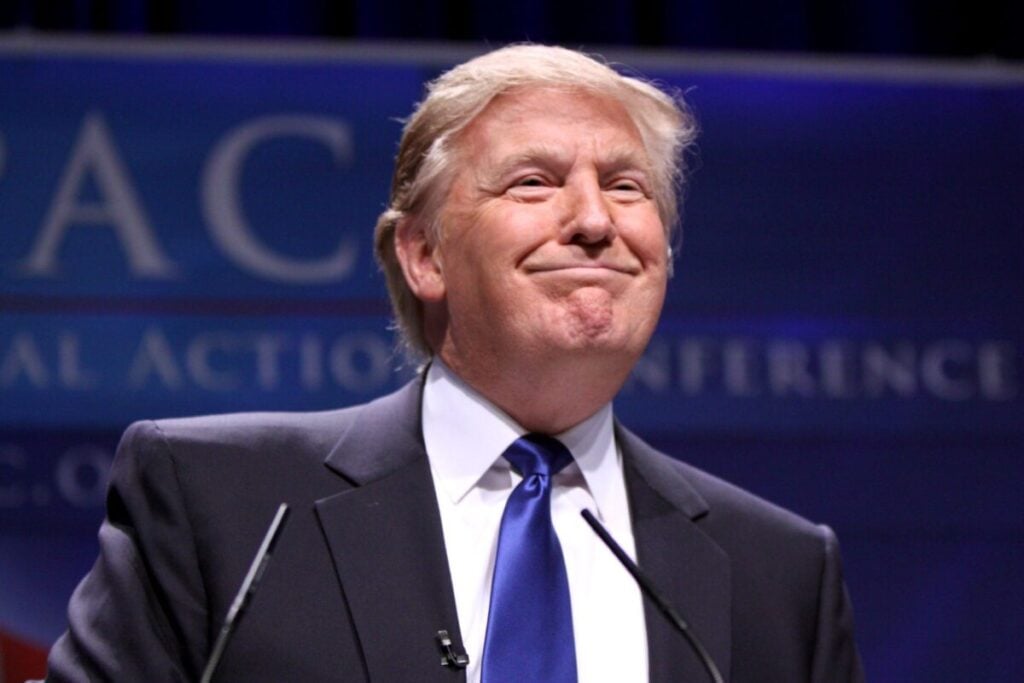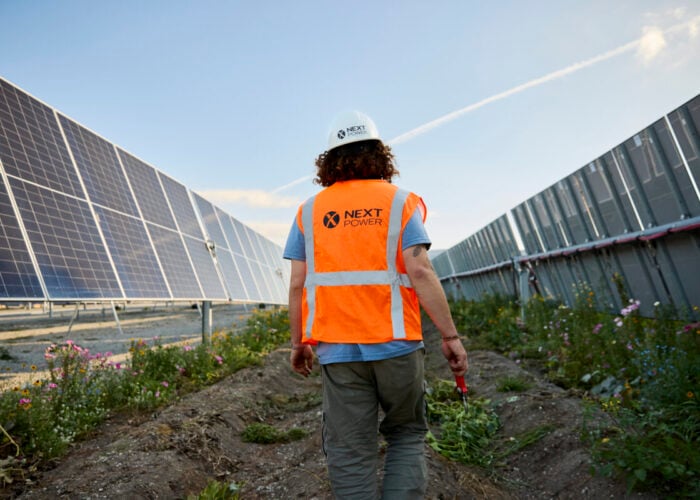
The CEO of America’s main solar trade body, the Solar Energy Industries Association (SEIA), has predicted a difficult few years ahead for the US solar industry as it navigates tariff and policy disruption.
Addressing the opening of the Intersolar 2025 conference in Munich, Abigail Ross Hopper, CEO of the Solar Energy Industries Association, spoke of the uncertainties facing the US industry as a result of the Trump administration’s trade tariffs and threats against tax incentives.
Try Premium for just $1
- Full premium access for the first month at only $1
- Converts to an annual rate after 30 days unless cancelled
- Cancel anytime during the trial period
Premium Benefits
- Expert industry analysis and interviews
- Digital access to PV Tech Power journal
- Exclusive event discounts
Or get the full Premium subscription right away
Or continue reading this article for free
“I have been in this role since early 2017 and I don’t think there’s ever been a time of greater uncertainty in the US market than right this minute, for a number of reasons – tariffs being one of them and uncertainty around tax incentives being the other. If I’d been here [Intersolar] last year, we were still taking a prolonged victory lap. And this year… the world has changed pretty dramatically.”
The Trump administration has imposed hefty tariffs on general Chinese imports into the US and a range of steep duties specifically on solar products entering the country from Southeast Asian countries that have become manufacturing hubs for Chinese-owned companies.
Ross Hopper said: “As far as tariffs go, I don’t know how much I have to offer. I will just say, it is a very unstable time with regard to tariffs. The changes happen quickly. They have not proven to be durable; they come and they go, and it’s not entirely clear what the rules of the road are, and so as a result, there’s a lot of uncertainty across markets, but certainly in the US market, around supply chain and where we’re going to get products from and what countries we’re going to get product from, and what’s the best way to strategise around procurement.
“But I don’t think any of us could be in this business if we weren’t optimistic, and so I’m eternally optimistic, and believe in the economic fundamentals and the technology fundamentals. I think we’re going to weather through this storm, but it is going to be a bit rocky for a few years.”
‘American energy dominance’
Ross Hopper also discussed the concept of “American energy dominance”, a term Trump has coined to refer to the exploitation of domestic fossil fuel resources, but which she said the US solar industry is also embracing.
“Our president has spoken often about American energy dominance, and we quickly realised that we are part of that story, right? We cannot allow ourselves to be sort of put over in the corner as just renewables or just solar. So we have really embraced as a political tool, this phrase American energy dominance, and have really made the case with elected officials that for all of the reasons that we’ve talked about in the United States, like many of your countries, electricity demand is growing, growing rapidly, and that solar and solar-plus-storage are really the only ways to meet that need.
“And so, if we think about being at the forefront of the artificial intelligence growth, if we think about being at the forefront of domestic manufacturing, we think about being at the forefront of data centres, it means we have to have a reliable, resilient, affordable electricity system. And for us in the United States, the only way to get there is through solar and storage. We’re the fastest to market, and so it’s really sort of take the feelings out of it, right, and just look at the facts. And the facts are that in order to achieve energy dominance, we have to really embrace solar-plus-storage.”






